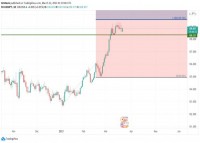|
Opalesque Industry Update - Hedge funds appear to be moving aggressively to take down costs associated with their trading desks in the midst of a prolonged period of depressed trading activity, according to the results of a new study by Greenwich Associates. To assist institutions in assessing and improving the operation of their trading desks, Greenwich Associates conducted a study of 232 head traders and traders at a variety of buy-side institutions, including asset management firms, corporate treasuries, pensions, endowments, hedge funds, banks and insurance companies. Greenwich Associates asked participants about the organizational structure, staffing levels, budgets and operations of their trading desks. Forty-four percent of hedge funds participating in the study said their 2012 trading desk budgets were reduced from 2011, with approximately 40% reporting flat budgets and 17% reporting increases. Those results suggest that hedge funds are moving much more aggressively than other types of institutional investors to adjust the size and cost of their trading desks in response to a general slowdown in securities trading activity. Among the entire universe of institutions participating in the study, roughly one-in-five said its 2012 budget was reduced from last year. About half the institutions said their budgets were unchanged over the past 12 months — in many cases maintaining the status quo of reduced resources in place since crisis-era cutbacks. “On the other hand, 30% of institutions surveyed said their annual trading desk budget for 2012 increased from 2011,” says Greenwich Associates Institutional Analyst Kevin Kozlowski. Investment in Buy-Side Trading Capabilities For many institutions that increased their trading desk budgets last year, the new expenditures are making up for cutbacks enacted during the global market crisis. Some institutions, however, appear to be increasing their investments in their trading desks in response to changes in market structure that are placing an increased emphasis on trading capabilities, including:
“Trading is not a utility; it is a key part of the investment process,” concludes Nathaniel Evarts, Managing Director and Head of Americas Trading at State Street Global Advisors and a participant in the Greenwich Associates study. Press release bc |
Industry Updates
Greenwich report finds hedge funds are cutting budgets on trading desks
Monday, October 08, 2012
|
|





 RSS
RSS







